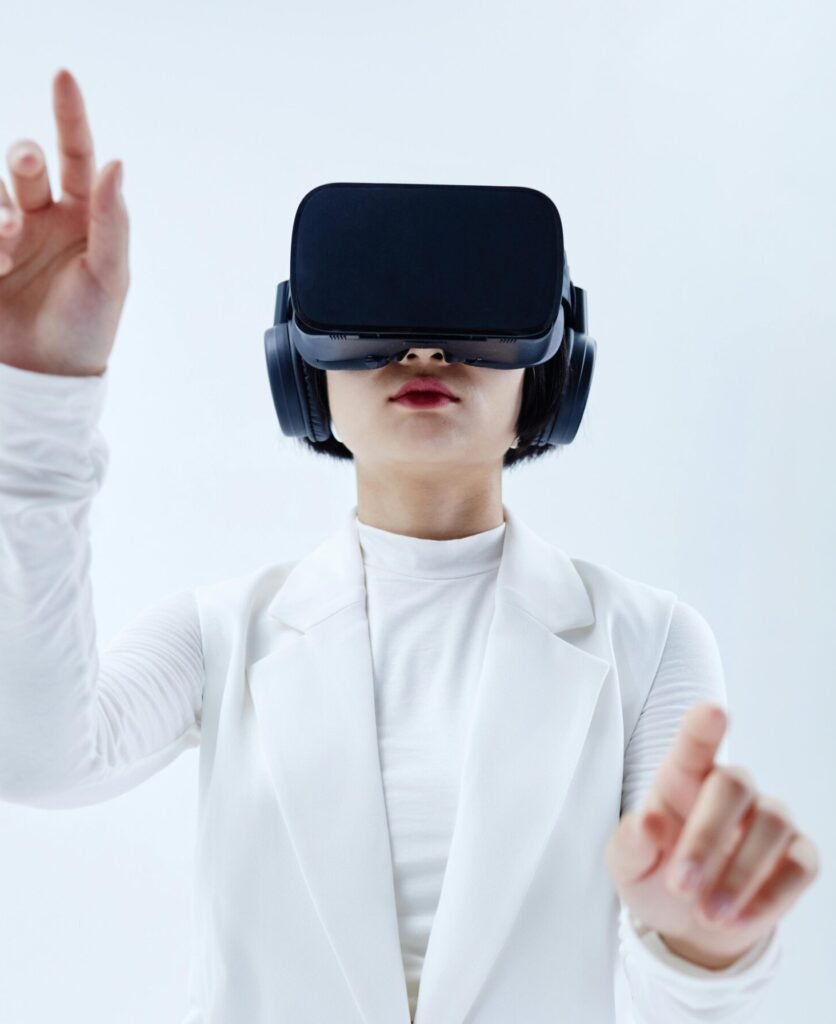Augmented Reality (AR) is increasingly being adopted in the retail industry, offering innovative solutions to enhance customer experiences and streamline operations. By overlaying digital information onto the physical world, AR is transforming the way consumers interact with products and brands, providing a more immersive and engaging shopping journey. This technology is not only enhancing the in-store experience but also revolutionizing online shopping, bridging the gap between physical and digital retail.
Join our FREE newsletter today, where we help you stay up to date in the tech industry.

Enhancing In-Store Experiences
In physical stores, AR is being used to create interactive and personalized shopping experiences. Retailers are deploying AR applications that allow customers to visualize products in their intended environment. For instance, furniture stores offer AR apps that let customers see how a piece of furniture would look in their home by simply pointing their smartphone camera at the desired location. This capability helps customers make more informed purchasing decisions and reduces the likelihood of returns.
Clothing retailers are also leveraging AR to improve the in-store experience. Virtual fitting rooms enable customers to try on clothes without physically changing, using AR mirrors or apps that superimpose garments onto their reflection. This not only enhances convenience but also reduces the time spent in fitting rooms, improving overall store efficiency and customer satisfaction.
Transforming Online Shopping
AR is significantly enhancing the online shopping experience by allowing customers to interact with products in a virtual environment. This is particularly beneficial for categories where tactile feedback and visual inspection are crucial, such as fashion, beauty, and home decor. By using AR, online shoppers can see how a piece of clothing fits on a virtual avatar that matches their body measurements or test how a shade of lipstick looks on their face.
One of the most notable applications of AR in online shopping is the “try-before-you-buy” feature. For example, eyewear brands offer AR experiences where customers can virtually try on different styles of glasses to see how they look before making a purchase. This not only enhances the customer experience but also increases confidence in buying decisions, potentially leading to higher conversion rates and reduced return rates.
Improving Customer Engagement and Marketing
AR is a powerful tool for enhancing customer engagement and creating memorable marketing campaigns. Brands are using AR to develop interactive advertisements that captivate audiences and encourage them to engage with the brand in novel ways. For example, AR-enabled posters or flyers can come to life when viewed through a smartphone app, offering additional information, animations, or promotional content.
Retailers are also incorporating AR into loyalty programs and gamified shopping experiences. By using AR to create treasure hunts or interactive games within the store, retailers can increase foot traffic, encourage exploration of the store, and ultimately drive sales. These engaging experiences help build stronger connections with customers and foster brand loyalty.
Streamlining Operations and Training
AR is not only transforming the customer-facing aspects of retail but also streamlining backend operations and employee training. In warehouses, AR applications are being used to optimize inventory management and order fulfillment processes. AR glasses can provide workers with real-time information on the location of items, optimal picking routes, and inventory levels, improving efficiency and accuracy.
Employee training is another area where AR is making a significant impact. Retail staff can use AR to simulate various scenarios, such as handling customer inquiries, operating new equipment, or arranging store layouts. These immersive training experiences can accelerate learning, enhance retention, and ensure that employees are well-prepared to deliver exceptional service.
Challenges and Future Prospects
Despite its numerous advantages, the adoption of AR in retail is not without challenges. One of the primary concerns is the initial cost of implementing AR technology, which can be substantial for smaller retailers. Additionally, ensuring a seamless and user-friendly AR experience requires sophisticated hardware and software integration, which can be technically demanding.
Privacy concerns are also pertinent, as AR applications often require access to personal data and camera feeds. Retailers must implement robust data protection measures and be transparent with customers about how their information is used to build trust and ensure compliance with privacy regulations.
Looking ahead, the future of AR in retail appears promising. As technology continues to advance, AR experiences will become more immersive, accessible, and integrated into everyday shopping. The development of AR glasses and other wearable devices is expected to further enhance the capabilities of AR in retail, providing more intuitive and hands-free experiences.
Retailers that embrace AR and invest in its potential are likely to gain a competitive edge, offering unique and engaging experiences that resonate with modern consumers. By continually innovating and addressing the challenges associated with AR adoption, the retail industry can harness the full potential of this transformative technology, revolutionizing the way we shop.



